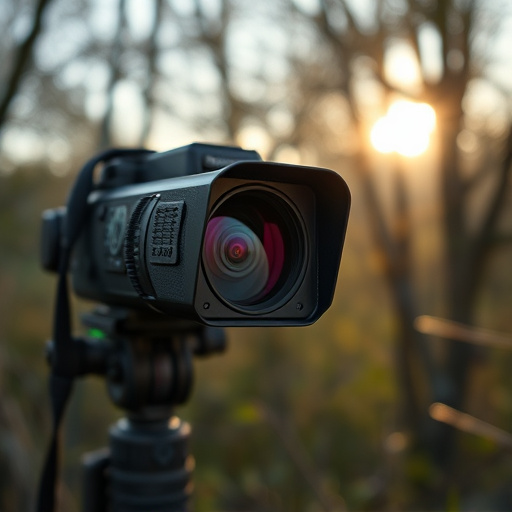Before installing concealed security cameras, especially "nanny cams," understand that laws regarding secret nanny cameras vary widely across jurisdictions, with strict regulations protecting privacy in residential settings. Discretion is key; integrate cameras into structures or objects for a low-profile presence. Positioning near entryways or hiding behind everyday items offers effective surveillance while adhering to local laws, which prohibit recording in areas like bedrooms and bathrooms without consent. Always obtain consent and stay informed about laws regarding secret nanny cameras in your area to maintain legality, foster security, and avoid severe legal consequences.
“Uncover the art of concealed security camera mounting with our comprehensive guide. In an era where privacy laws, particularly those regarding ‘nanny cams,’ are evolving, understanding the ethical and legal boundaries is crucial. Explore the intricacies of mounting secret cameras while adhering to the rules outlined by the Laws Regarding Secret Nanny Cameras. From best practices to optimal surveillance spots, this article equips you with insights into both traditional and advanced hidden camera systems.”
- Understanding Legal Boundaries: What You Need to Know About Nanny Cam Privacy Laws
- Ethical Considerations for Secret Camera Installation
- Best Practices for Discreet Security Camera Mounting
- Common Places to Hide Cameras for Optimal Surveillance
- The Impact of Technology: Advanced vs Traditional Hidden Camera Systems
Understanding Legal Boundaries: What You Need to Know About Nanny Cam Privacy Laws
Before installing any concealed security cameras, it’s crucial to understand the legal boundaries set by privacy laws, especially when it comes to so-called “nanny cams.” These laws vary significantly from one jurisdiction to another, so it’s essential to research and comply with local regulations. Many regions have strict rules regarding secret surveillance devices, particularly in residential settings, focusing on the right to privacy of individuals living or working there.
The placement and use of nanny cameras must adhere to these laws to avoid legal consequences. Typically, there needs to be clear consent from all parties involved, especially if the camera is capturing images or audio inside someone’s home or private workspace. It’s also important to know that certain areas, like bathrooms and bedrooms, are often considered off-limits for surveillance devices due to privacy rights protections. Understanding these legal frameworks ensures your security measures remain within ethical and legal parameters.
Ethical Considerations for Secret Camera Installation
When considering the ethical implications of installing secret security cameras, it’s crucial to understand the legal boundaries and respect privacy rights. While hidden cameras can be a powerful tool for surveillance, many regions have laws in place to prevent their misuse, especially in sensitive areas like homes or places of employment. The placement of these devices must adhere to regulations regarding consent, reasonable expectations of privacy, and data protection.
Nanny cam users should be mindful that capturing video without knowledge can infringe on personal privacy, leading to legal consequences. It’s essential to disclose the camera’s presence and obtain permission from individuals who may be recorded. Understanding local laws regarding secret nanny cameras is vital to ensure ethical practice and avoid potential backlash or lawsuits.
Best Practices for Discreet Security Camera Mounting
When it comes to concealed security camera mounting, discretion is key. The best practice is to integrate the cameras into existing structures or objects in a way that’s hard to detect. This could mean mounting them inside light fixtures, electrical panels, or even custom-made frames that blend seamlessly with your decor. It’s crucial to ensure these hidden cameras capture clear footage while remaining virtually invisible to potential intruders.
Remember to familiarize yourself with the laws regarding secret nanny cameras or hidden surveillance devices in your area. Regulations vary widely, and using such devices without consent can have serious legal implications. Always obtain proper authorization before installing any concealed security cameras to avoid breaking the law and ensure a secure environment for all.
Common Places to Hide Cameras for Optimal Surveillance
When considering concealed security camera mounting, understanding common placement points is key for effective surveillance while adhering to laws regarding secret nanny cameras. A frequent option is positioning cameras near entryways, such as doors or windows. Their strategic location allows for clear views of visitors and deter potential intruders. Another tactic involves hiding cameras behind everyday objects like pictures frames, plants, or even smoke detectors – subtle placements that avoid detection yet capture valuable footage.
It’s crucial to be mindful of local privacy laws when employing these tactics. Many areas have stringent regulations regarding hidden cameras, particularly in places like bedrooms or bathrooms, often referred to as “nanny cam” hotspots. Staying informed about these legalities ensures your security measures remain within ethical and legal boundaries.
The Impact of Technology: Advanced vs Traditional Hidden Camera Systems
The evolution of technology has significantly transformed the security camera industry, leading to a distinction between advanced and traditional hidden camera systems. Modern, advanced systems leverage innovative techniques for concealment, often integrating with smart home devices or utilizing infrared and motion-activated features for discreet surveillance. These tech-driven solutions offer enhanced capabilities such as remote access, higher resolution footage, and automated triggers, making them popular choices for security professionals and homeowners alike.
In contrast, traditional hidden camera systems rely on more straightforward methods of concealment, often requiring physical manipulation to activate recording. While effective, these systems may lack the advanced features and connectivity options available in modern alternatives. It’s crucial to consider not only the effectiveness of these systems but also the laws regarding secret nanny cameras (or any form of surveillance) in your region to ensure compliance and protect privacy rights.
In conclusion, while hidden security cameras can offer valuable surveillance, it’s crucial to balance their installation with legal and ethical considerations. Understanding the laws regarding secret nanny cameras, such as those governing privacy, is essential for responsible deployment. Best practices for discreet mounting and understanding the impact of advanced technology ensure effective security without infringing on personal privacy. By adhering to these guidelines, you can navigate the use of hidden camera systems in a legally and ethically sound manner.
